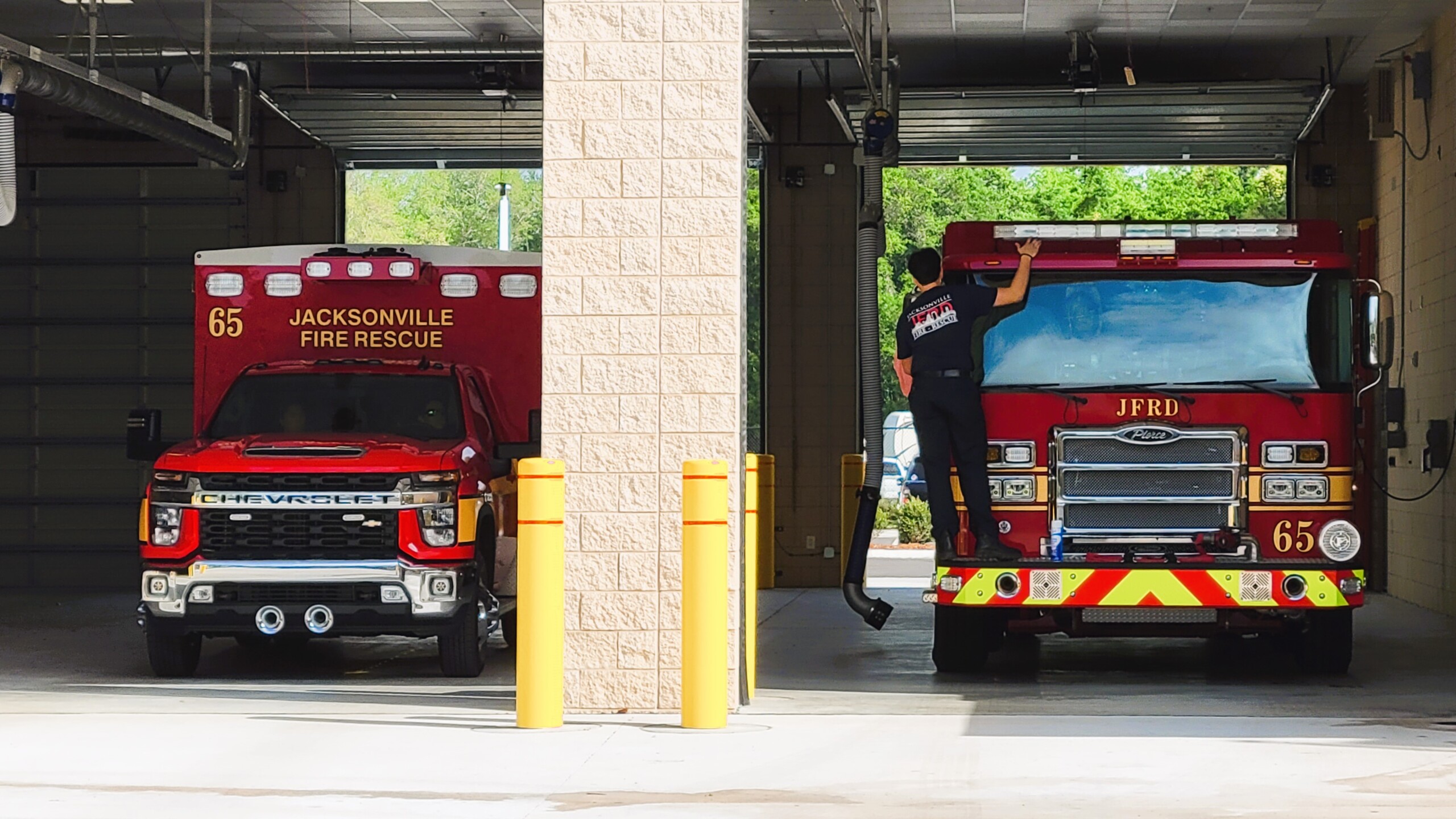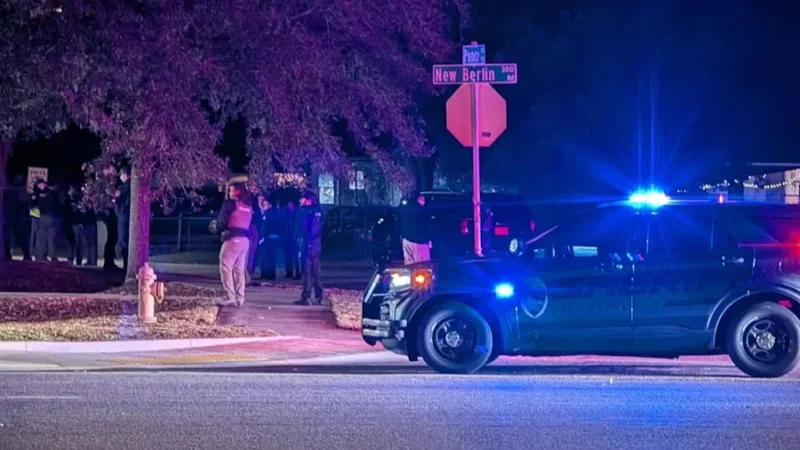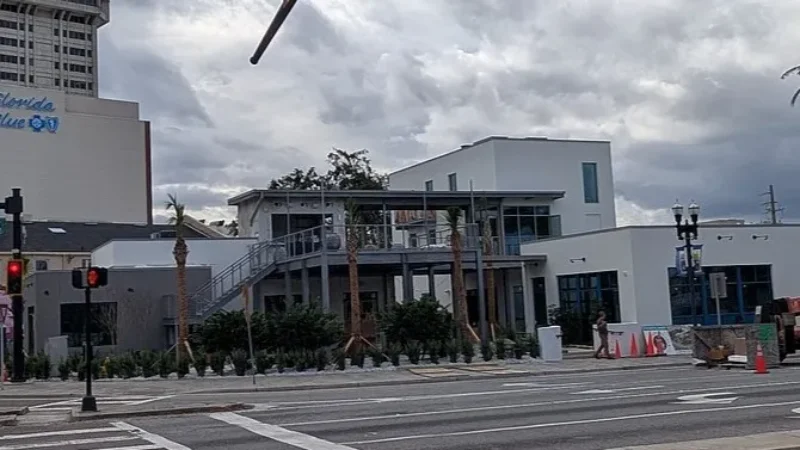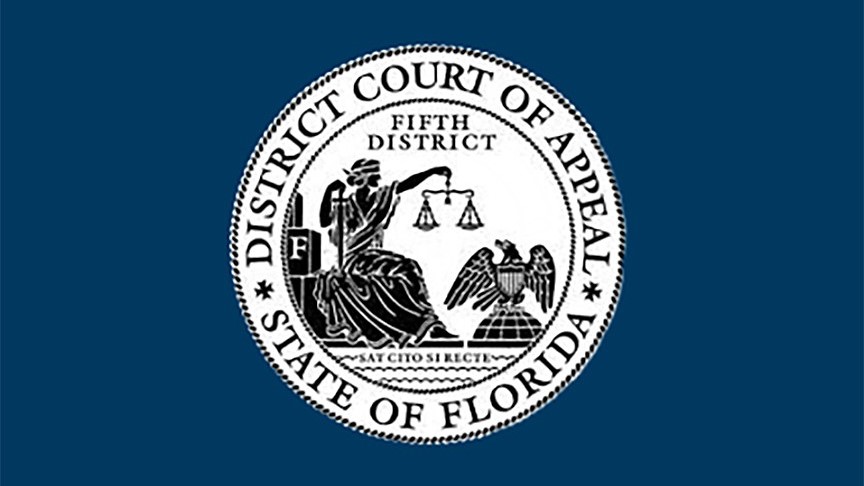Tim Andrews stood with his wife, Shirley, as Jacksonville Fire Chief Keith Powers and other city officials cut the ribbon Tuesday to officially open Fire Station 65 on Bailey Body Road off Arlington Road.
The new $7.5 million station is about a mile from the Andrews’ Glynlea Park home, which originally got fire and rescue help from Fire Stations 19 on Rogero Road, 20 on Huffingham Lane, 30 near Regency Square and the city’s busiest, Station 28 on Hogan Road.
Despite all of those existing stations a few miles away from them, they say Station 65 could become a life saver, as they learned when its new fire engine and rescue unit helped a neighbor who lives near his mother just days before the ribbon cutting.
“I think it’s great,” he said. “As a matter of fact, they came to a call on Oglethorpe Road the other day from this station in less than three minutes. With my mother being 92, I think that’s wonderful.”
That is the reason why Station 65 has opened next to the Grove Park and Glynlea neighborhoods south of Atlantic Boulevard, Powers said. The so-called “pocket station” is there to reduce the strain on those other stations east, west, north and south.
“It is within five road miles of other fire stations,” Powers said. “This community desperately needed a fire station in here because this area is so busy, so it is going to reduce response times by about a minute and 15 seconds into this area. In our business, seconds equal lives. So it is extremely important to the citizens who live around this area.”
The new fire station off Arlington Road South opens with an engine and rescue unit and room for up to 10 firefighters, funded in the Fiscal Year 2019 budget, Powers said.
The new station is in the middle of City Councilman Kevin Carrico’s District 4, bordered by Butler and Atlantic boulevards, and University Boulevard east to almost Interstate 295. That district is already home to Fire Stations 19, 20, 30 and 28.

Just before the ribbon was cut at the new station, Powers said it will be dedicated in memory of retired Engineer Wayne Doolittle, who died June 10 at age 81.
The veteran firefighter was later appointed as the department’s volunteer coordinator from 1991 to 1995, after his retirement from active duty. Doolittle produced the fire department yearbook, wrote its annual reports and served as its photographer. He played a major role in opening the Jacksonville Fire Museum in Fire Station 3. And he was involved in the establishment of the Fallen Firefighter Memorial at Fire Station 1, finding its memorial bell, which once topped an early 20th century City Hall, in 1986 in a city storage room.
“Wayne joined JFRD and served the department with excellence for 32 years, during which he was selected and distinguished as Firefighter of the Year in 1987,” Powers said. “His commitment to JFRD was exemplary throughout his active duty and well into his retirement.”
The new station has three bays, the third one in case of expansion, plus a kitchen, dining and locker rooms, a dispatch area and a fitness room. Property owner Robert Bailey sold the 8.8-acre site to the fire department for just under $2 million. Station 65’s firefighters and paramedics had been housed at Station 19 for two years as they awaited their new home’s opening.

The grand opening came a year and a half after fire officials opened the $7 million Station 63 on Gate Parkway as well as the new $5.5 million Fire Station 74 at the e-Town Parkway. In late January, ground was broken for a “pocket” fire station on Harts Road north of Dunn Avenue area, on the site of a former bank, the ninth fire station started by the city in the past two years. Station 75 at Wilson Boulevard and I-295 is also in the planning stages.
The City Council also is reviewing a budget request to transfer $1.085 million in residual funds left over from
several other completed fire station projects (Stations 4, 20, 50, 73 and 74) to help pay the $7.7 million price tag for construction of temporary Station 76 on Cedar Point Road, near Boney Road.
Powers said that new station should open late this summer. It will improve the long response time to calls for service in the area and help its current ISO insurance rating, which is Class 10 (lowest) because of the distance to other fire stations, fire officials said.
9(MDEwNzczMDA2MDEzNTg3ODA1MTAzZjYxNg004))







